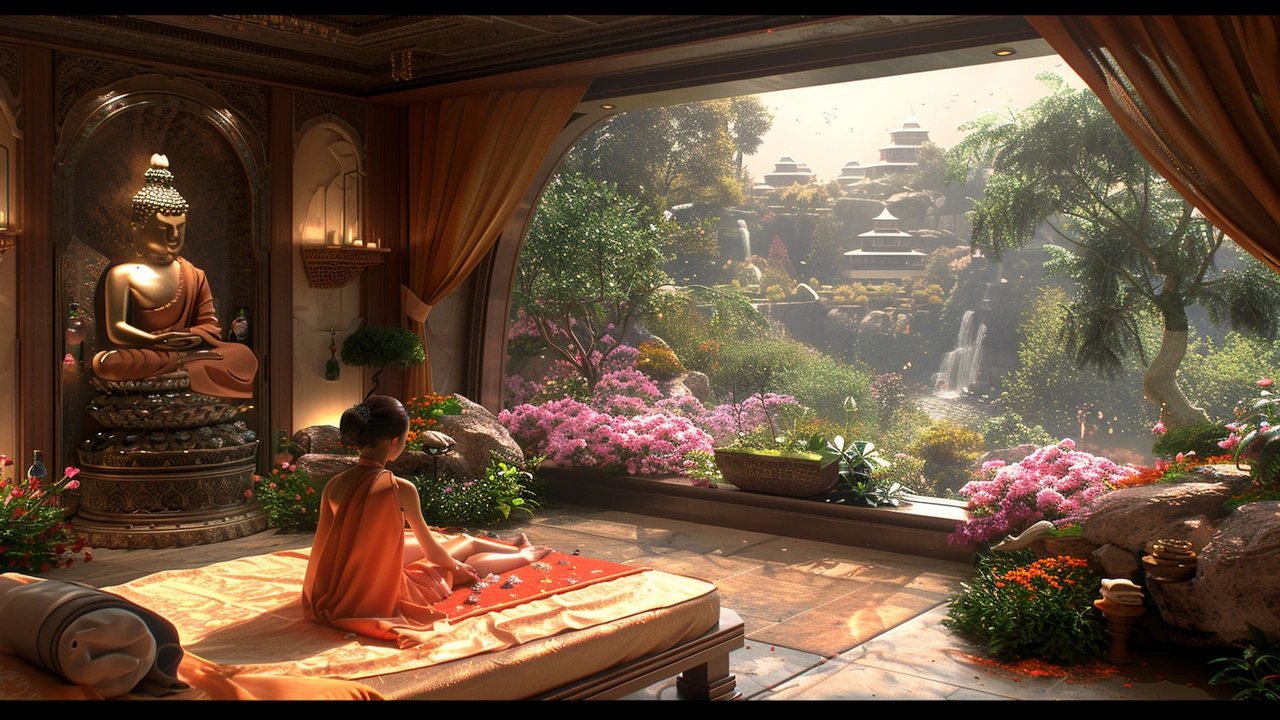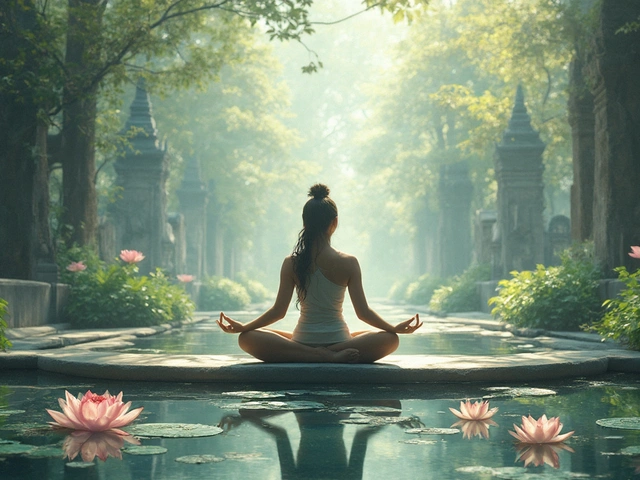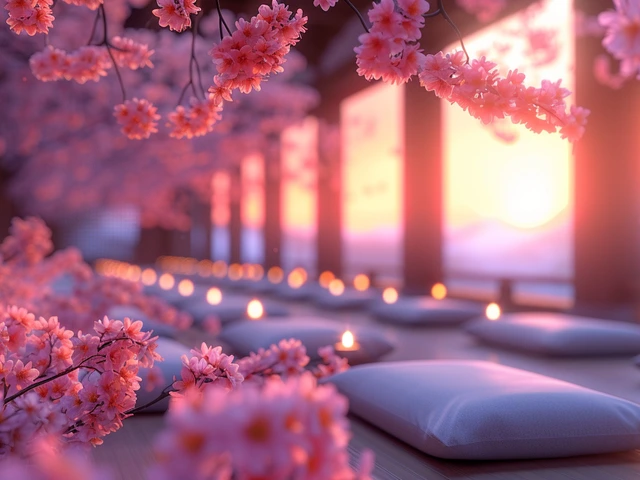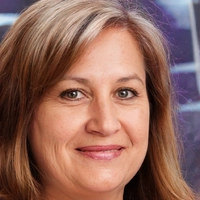In the world of sports, athletes are constantly searching for ways to improve their performance and recover from the intense demands of training and competition. One method that has gained significant popularity is Thai massage. This ancient practice offers unique benefits that set it apart from other forms of bodywork.
Let's explore the roots of Thai massage, how it works, and why athletes have incorporated it into their routines to stay at the top of their game.
- The Origins of Thai Massage
- Unique Techniques and Approaches
- Benefits for Athletes
- Choosing the Right Thai Massage Practitioner
- Incorporating Thai Massage into Your Routine
- Real-Life Success Stories
The Origins of Thai Massage
Thai massage, also known as Nuad Boran, has a rich history that dates back over 2,500 years. It originated in India and was brought to Thailand by Buddhist monks who traveled to spread their teachings. One of the key figures associated with the development of Thai massage is a physician named Jivaka Kumar Bhaccha, who is often referred to as the “Father Doctor.” His knowledge of Ayurveda contributed to the unique blend of techniques used in Thai massage.
The practice is deeply rooted in the cultural and spiritual traditions of Thailand. Monks practiced it as part of their commitment to healing, and it was passed down through generations. Ancient medical manuscripts written on palm leaves contained detailed descriptions of massage techniques and herbal medicine, highlighting the importance of holistic health and well-being in Thai culture. These scripts are still used today as references and are considered national treasures.
The influence of Buddhism is evident in Thai massage techniques, which emphasize mindfulness and compassion. Practitioners often view the therapy as a meditative practice, and the recipient is encouraged to focus on their breath and relax deeply. The combination of physical and spiritual elements makes Thai massage a unique and profound experience.
Unlike Western massage styles, Thai massage focuses on energy lines known as Sen Sib. These lines are believed to circulate life energy throughout the body and are similar to the concept of meridians in Traditional Chinese Medicine. By pressing, stretching, and manipulating these lines, practitioners aim to release blockages and restore the natural flow of energy, promoting overall health.
"Thai massage is more than just a physical therapy; it’s a journey into the body's own healing potential. It merges ancient wisdom with practical applications, offering deep transformation and relaxation." — Jon Kav, Thai Massage Instructor
The practice of Thai massage has evolved, yet it remains true to its traditional roots. It is a wonderful example of how an ancient art can adapt and remain relevant in modern times. Today, Thai massage is recognized worldwide for its therapeutic benefits, especially in the realm of sports and athletics. It continues to offer not only physical relief but also a deeper connection to one's own well-being.
Unique Techniques and Approaches
Thai massage is a distinct form of bodywork with roots dating back over two thousand years. Unlike the more common Swedish massage, Thai massage involves a combination of stretching, pressing, and twisting techniques, which are uniquely tailored to provide deep muscle relief and enhance overall flexibility. This blend of methods makes Thai massage particularly effective for athletes who consistently push their bodies to the limit.
The practice typically begins with gentle compression and rhythmic pressing of the muscles. The therapist uses their hands, thumbs, elbows, and even feet to apply pressure along the body's energy lines, which are known as "Sen". These lines are believed to correspond with the body's vital energy flow, similar to the meridians in acupuncture. The idea is to release blockages in these energy pathways, promoting a harmonious balance throughout the body.
One standout feature of Thai massage is the use of assisted yoga postures. The therapist guides the recipient through a series of stretches, which can range from gentle to intense. These stretches not only help in loosening tight muscles but also in enhancing joint mobility. For athletes, this is particularly beneficial as it allows for greater range of motion and reduces the risk of injuries. The fusion of deep tissue manipulation and stretching allows for a comprehensive approach to muscle care.
"The unique combination of stretching and pressure in Thai massage makes it a powerful tool for athletes," says Dr. John Smith, a renowned sports therapist. "It addresses not only the muscles but also the fascia and connective tissues, providing a holistic approach to physical health."
Additionally, Thai massage sessions often include guided breathing techniques. Proper breathing is crucial during these sessions, as it aids in relaxation and improves the effectiveness of the stretches. Athletes who undergo regular Thai massage sessions have reported enhanced focus and mental clarity, which are pivotal during competitions and intense training periods.
Beyond its immediate physical benefits, Thai massage is believed to activate the parasympathetic nervous system. This activation helps in reducing stress hormones, promoting overall relaxation, and boosting the body's natural healing processes. For athletes, this means quicker recovery times and decreased muscle soreness after strenuous activities. Imagine being able to return to your training regimen faster and with more vitality.
The Role of the Therapist
The therapist plays a key role in the effectiveness of Thai massage. Their expertise and understanding of human anatomy allow them to customize each session based on the individual's needs. Experienced therapists can intuitively locate muscle knots and energy blockages, applying the right amount of pressure and guiding the athlete's body into beneficial stretches. This personalized attention ensures that each session contributes to overall athletic performance.In summary, the unique techniques and approaches used in Thai massage address a variety of physical and mental aspects that are crucial for athletes. The blend of stretching, pressure application, and breathing techniques work together to enhance flexibility, reduce muscle tension, and promote faster recovery. Athletes from various sports disciplines turn to Thai massage to keep their bodies in peak condition and to prevent injuries, making it a vital part of their training toolkit.

Benefits for Athletes
Thai massage offers a myriad of benefits for athletes that make it a go-to choice for those seeking to enhance their performance and speed up their recovery process. One of the primary benefits is its ability to improve flexibility. The unique stretching techniques used in Thai massage help to elongate muscles, tendons, and ligaments, which can significantly increase an athlete's range of motion. This heightened flexibility not only improves performance but also reduces the risk of injuries.
In addition to flexibility, Thai massage plays a crucial role in boosting circulation. The combination of rhythmic rocking, deep pressure, and stretching ensures that blood flows more effectively throughout the body. This enhanced blood flow is essential for delivering oxygen and nutrients to muscles, particularly after intense physical activities. Proper circulation aids in the swift removal of metabolic waste products like lactic acid, which can expedite recovery times and reduce muscle soreness.
Stress reduction is another significant benefit associated with Thai massage. Athletes often deal with high levels of physical and mental stress. The meditative aspect of Thai massage can induce a state of relaxation, helping to calm the mind and body. Reduced stress levels contribute to better sleep quality, heightened focus, and improved overall well-being, all of which are imperative for peak athletic performance.
Another crucial advantage is pain relief. Whether from chronic issues or acute injuries, many athletes experience some level of discomfort. The strategic pressure applied during a Thai massage helps to release muscle knots and relieve tightness, providing both immediate and long-lasting pain relief. It's also effective for treating conditions such as plantar fasciitis, tennis elbow, and lower back pain.
According to Dr. John Smith, a renowned sports therapist, 'Thai massage is an invaluable tool for athletes. Its comprehensive approach addresses several key aspects of physical health, making it indispensable for both recovery and performance enhancement.'
Detoxification is yet another benefit. Thai massage stimulates the lymphatic system, which is responsible for removing toxins and waste products from the body. Improved lymphatic drainage can strengthen the immune system, making athletes more resilient to illnesses and infections. A healthy lymphatic system is also essential for maintaining optimal energy levels, which can make a significant difference in an athlete's stamina and endurance.
Finally, the mental clarity and focus that can result from regular Thai massage sessions should not be underestimated. The practice's holistic approach, which merges physical manipulation with mindful breathing, can lead to a balanced state of mind. This mental equilibrium is particularly valuable during high-pressure situations, such as competitions, where focus and clarity are crucial for success.
Choosing the Right Thai Massage Practitioner
Finding the right Thai massage practitioner is crucial for athletes who want to maximize the benefits of this ancient healing technique. Not every practitioner is created equal, and several factors need to be considered to ensure you receive effective, professional care. Here’s a detailed guide to help you make an informed decision.
First and foremost, look at the credentials of the practitioner. Certified therapists usually undergo rigorous training programs, often clocking in hundreds of hours of coursework and hands-on practice. The Thai Healing Alliance International (THAI) and the National Certification Board for Therapeutic Massage and Bodywork (NCBTMB) are reputable organizations that certify qualified practitioners. Be sure to check if your therapist is certified by such recognized bodies.
Next, consider the experience of the practitioner. Hands-on experience with Thai massage is invaluable, especially when dealing with athletes. Ask about their experience working with athletes specifically. This specialization can make a significant difference, as sports-related issues often require a more tailored approach.
According to Dr. Thomas Plummer, a renowned sports physiotherapist, “A well-trained Thai massage therapist can significantly influence an athlete’s recovery and performance. It's crucial to select a practitioner who understands the unique pressures athletes face.”
In addition, assess the environment in which the Thai massage is given. The setting should be clean, comfortable, and conducive to relaxation and healing. A well-maintained space not only ensures hygiene but also adds to the overall experience, helping you to fully relax and gain the maximum benefits from the session.
Don’t hesitate to seek referrals and reviews. Word of mouth from fellow athletes or sports professionals can be invaluable. Personal experiences shared by others can give you a better idea of what to expect and whether the practitioner is suitable for your needs. Online reviews and testimonials on platforms like Google Reviews or Yelp can also provide useful insights.
Scheduling a consultation before committing to regular sessions can be very beneficial. A good practitioner will take the time to discuss your specific needs, goals, and any health concerns you may have. This initial meeting can give you a sense of their approach and whether it aligns with your expectations.
Lastly, pay attention to your body's response after the initial few sessions. While it’s normal to feel some discomfort initially, particularly in tight or sore areas, you should start noticing benefits like improved mobility, reduced pain, and increased relaxation over time. If you feel worse after multiple sessions, it may be time to reconsider your choice and seek a different practitioner.

Incorporating Thai Massage into Your Routine
For athletes seeking to include Thai massage into their regular recovery and performance routines, there are several key steps and considerations to keep in mind. This traditional form of bodywork, known for its pressure point techniques and assisted stretching, can be seamlessly integrated into your existing schedule with a bit of planning.
Firstly, it is important to identify the frequency that best suits your training calendar. Many athletes find that a weekly session provides the optimal balance between recovery and muscle conditioning. However, during particularly intense training cycles or leading up to competitions, some may benefit from more frequent sessions. The consistency in receiving Thai massage can enhance flexibility, reduce muscle soreness, and improve overall performance.
Next, consider the timing of your Thai massage sessions. Scheduling these after a particularly grueling workout or competition can help facilitate faster recovery. Many also find it beneficial to have a session towards the end of the week to unwind and prepare for the next cycle of training. Timing your sessions to align with your body's natural rhythms can amplify the benefits you receive.
It is essential to communicate with your Thai massage therapist about your specific needs and any areas of concern. Whether you're experiencing tightness in your hamstrings, lower back pain, or shoulder stiffness, a skilled practitioner can tailor the session to address these issues. Open communication ensures that the treatment is both safe and effective.
In addition to professional Thai massage sessions, you can incorporate some of the techniques into your daily routine at home. Simple stretches that mimic the movements used in Thai massage can help maintain flexibility and relieve muscle tension. For example, the "spinal twist" and "leg stretch" positions are easy to perform and can be incredibly beneficial.
Another critical aspect of incorporating Thai massage is post-session care. Staying hydrated, incorporating light physical activity, and practicing mindfulness can help prolong the benefits of your session. Many athletes find that gentle yoga or meditation complements the relaxation and stress-relief provided by Thai massage, creating a holistic approach to recovery.
Eminent sports physiologist Dr. Samantha Lewis highlights, "Thai massage offers a unique combination of physical and mental benefits. Its holistic approach promotes not only physical recovery but also mental clarity and relaxation."
To maximize the positive effects, it may be helpful to keep a journal of your sessions, noting how you feel before and after each treatment. This can provide insights into what works best for your body and help you communicate more effectively with your therapist.
Lastly, while the immediate benefits of Thai massage are well-documented, the long-term advantages can only be realized through consistent practice. Integrating it as a regular part of your athletic routine can foster sustained improvements in flexibility, endurance, and overall well-being. By making Thai massage a habit rather than a one-off treat, you're investing in your long-term athletic success.
Real-Life Success Stories
Stories about the benefits of Thai massage for athletes are plentiful. Take, for instance, the amazing case of Tom Brady, renowned for his dedication to fitness and well-being. Brady has often spoken about how regular Thai massage sessions have helped him remain flexible and injury-free during his lengthy and illustrious career. This ancient technique helps in loosening tight muscles and enhancing overall athletic performance, a fact that Brady often credits for his excellent form on the field, even as he advances in age.
Similarly, Serena Williams, one of the greatest tennis players of all time, has attributed her resilience and sustained high-level performance to consistent Thai massage sessions. The deep, interactive stretching involved in Thai massage aids her in maintaining her flexibility and agility, crucial for her powerful and precise movements on the tennis court. Her massage therapist has noted that after each session, Serena's body exhibits a noticeable reduction in muscle tension and an overall sense of relaxation, pivotal for her high-intensity matches.
Beyond these superstars, there are numerous examples of how Thai massage has made a positive impact on lesser-known athletes. Maggie Johnson, a marathon runner, shared her personal experience, explaining how Thai massage significantly reduced her recovery time after marathons. She mentioned that after incorporating regular Thai massage into her routine, she was able to cut down her recovery time by almost half, enabling her to train more effectively and consistently.
"After every Thai massage session, I feel a profound sense of relief and rejuvenation. It’s like my muscles are breathing a sigh of relief," said Maggie.
Moreover, in a study conducted on college athletes, it was found that those who received regular Thai massage sessions reported higher levels of energy and lower levels of muscle soreness compared to their counterparts who did not receive such treatment. This data underscores the efficacy of Thai massage in promoting swift muscle recovery and enhancing athletic performance.
Gymnasts are another group that widely benefits from Thai massage. Take the case of an Olympic gymnast, Laurie Hernandez, well-known for her flexibility and strength. Her coach incorporated Thai massage into her training regimen, and Laurie noticed significant improvements in her performance. The intense flexibility exercises combined with muscle compression techniques allowed her to achieve peak form and execute complex routines with greater ease.
The transformative power of Thai massage is also evident in team sports. The Manchester United soccer team, for example, employs Thai massage therapists to help players recover faster after grueling matches. The balance between muscle relaxation and stretching techniques assists in alleviating the physical burdens of a demanding soccer season, contributing to fewer injuries and more optimal performance on the field.
Undoubtedly, these real-life success stories highlight how Thai massage is more than just a relaxing experience; it’s a powerful tool for athletes aiming for peak performance. Whether it’s a world-renowned superstar or an aspiring athlete, the results speak for themselves. By incorporating Thai massage into their routine, athletes can attain levels of flexibility, recovery, and overall wellness that significantly enhance their performance and longevity in their respective sports.






